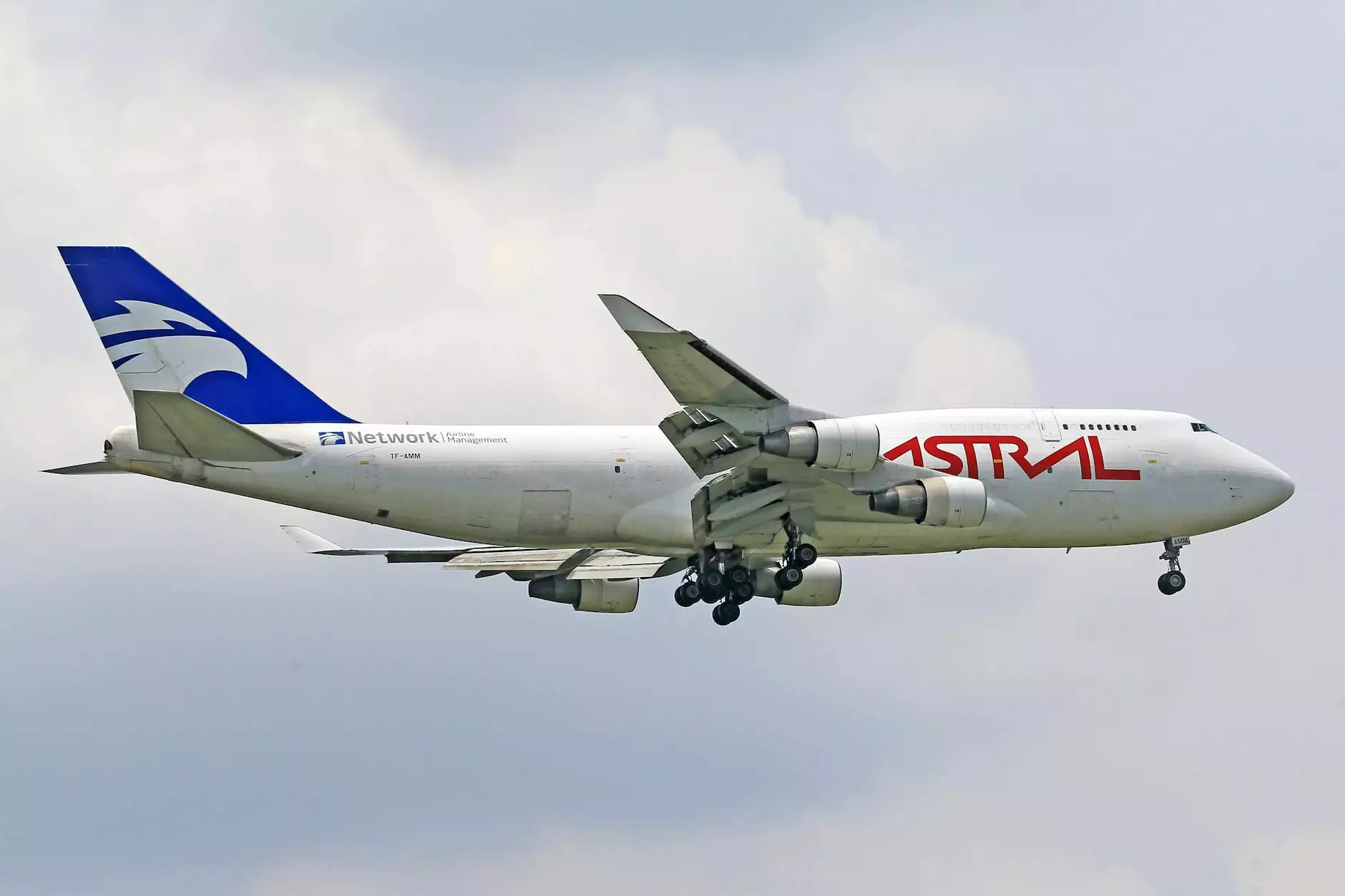Understanding Air Freight Cost Calculation

In the ever-evolving realm of international trade and logistics, air freight cost calculation plays a pivotal role in determining the efficiency and profitability of moving goods across borders. With the rise of global commerce, businesses are increasingly relying on air transportation to ensure the rapid delivery of essential products. In this article, we will delve deep into the intricacies of air freight cost calculation, exploring various influencing factors, methods of calculation, and tips for optimizing logistics expenses. Let's embark on this insightful journey into the world of air freight.
What is Air Freight?
Air freight refers to the process of transporting goods via air carriers, often considered one of the fastest shipping methods available. Unlike ocean freight or ground transportation, air freight allows for swift movement of goods over long distances, which is especially crucial for perishable items or high-demand products. Understanding how to calculate the costs associated with air freight is essential for businesses seeking to maximize efficiency while minimizing expenses.
The Importance of Accurate Cost Calculation in Air Freight
Air freight offers numerous advantages, such as speed and reliability, but it can also be one of the more expensive modes of transport. Thus, accurate air freight cost calculation is paramount for:
- Budgeting: Ensuring that all logistics expenses fit within budget constraints.
- Competitive Pricing: Allowing businesses to set competitive prices without sacrificing margins.
- Supply Chain Efficiency: Enhancing overall supply chain management by identifying cost-saving opportunities.
- Informed Decision-Making: Providing valuable insights that influence operational decisions.
Factors Influencing Air Freight Costs
There are several factors that contribute to the total cost of air freight. Understanding these factors is crucial in making informed choices about shipping methods and logistics. Here are some of the primary elements affecting air freight costs:
1. Weight and Volume of Cargo
The most significant factor in air freight cost calculation is the weight and volume of the cargo. Carriers assess charges based on whichever is greater: actual weight or volumetric weight (dimensional weight). The formula for calculating volumetric weight is:
- Volumetric Weight (kg) = (Length x Width x Height) / 5000
This method ensures that lighter, bulky items are charged appropriately, taking into account the space they occupy on the aircraft.
2. Nature of the Goods
The type of goods being shipped can significantly impact costs. For example:
- Hazardous materials: Incur additional handling fees due to special regulations.
- Perishable items: May require expedited shipping and temperature-controlled environments, raising costs.
3. Distance and Destination
The distance between the origin and destination is another critical factor. Longer hauls typically entail higher costs. Additionally, shipments to remote or less accessible airports may incur extra expenses due to logistic challenges.
4. Aircraft Type and Capacity
Different aircraft have varying capacities and operational costs. Premium services offered by larger carriers might come with increased fees but can optimize speed and reliability.
5. Seasonal Demand
Air freight prices fluctuate based on seasonal demand. During peak seasons, such as holidays, shipping costs tend to rise due to increased cargo volume and tighter capacity.
Methods of Air Freight Cost Calculation
To effectively manage logistics, it's essential to understand the different methods used for calculating air freight costs. Here are some of the most common methods:
1. Rate per Weight
This method calculates shipping costs based on the weight of the cargo. Carriers usually provide a rate sheet specifying charges per kilogram or pound. For example, if the rate is $5 per kg and you are shipping 100 kg, the total shipping cost would be:
- Cost = Rate x Weight = $5 x 100 kg = $500
2. Rate per Volume
As mentioned earlier, if the volumetric weight exceeds the actual weight, the freight charge is often calculated using the volumetric weight. This method ensures that bulky items are not unduly favored over heavier but smaller goods.
3. Flat Rate Shipping
Some carriers offer flat-rate shipping options for specific destinations or service levels. This method is straightforward and can aid in budgeting; however, it may not always provide the best value for larger or heavier shipments.
4. Custom Quotations
For complex shipments, especially those involving multiple factors like hazardous materials or custom requirements, getting a custom quote from the carrier may be necessary. This process requires providing detailed information about the shipment for an accurate cost assessment.
How to Optimize Air Freight Costs
Once you have a comprehensive understanding of how air freight costs are calculated, you can implement strategies to optimize these expenses:
1. Consolidate Shipments
Combining multiple smaller shipments into a single larger one can significantly reduce costs through economies of scale. This technique lowers the overall shipping rate per unit.
2. Strategically Select Carriers
Different carriers offer different pricing structures and levels of service. Research and compare multiple carriers to find the one that balances cost with reliability and speed.
3. Optimize Packaging
Utilizing efficient packaging can reduce the volumetric weight of the shipment, ultimately leading to lower shipping costs. Ensure that your packaging is lightweight while still providing the necessary protection for your goods.
4. Monitor Fuel Surcharges
Fuel prices can have a significant impact on air freight expenses. Stay informed about fuel surcharge trends and consider these costs when negotiating rates with carriers.
5. Plan Ahead
Last-minute shipments can result in premium pricing. By planning ahead and booking flights in advance, businesses can often secure better rates than through urgent bookings.
Conclusion
Understanding air freight cost calculation is essential for businesses seeking to thrive in the competitive landscape of international shipping. By grasping the various factors that influence costs and exploring effective calculation methods, companies can make informed decisions that enhance their operational efficiency. Moreover, implementing optimization strategies can substantially lower overall logistics expenses, thus improving profitability.
As global trade continues to expand, mastering the art of air freight management will offer significant advantages. Businesses that prioritize accurate cost assessment and strategic planning will find themselves better positioned to meet the challenges of tomorrow's logistics landscape. For more resources and insights on shipping and logistics, visit CargoBooking.aero.



